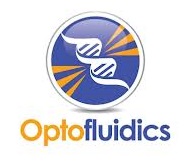Aug 28 2014
Introduction to Raman Spectroscopy
Raman Spectroscopy collects a chemical signature from a material using a laser excitation. In the robust technique, the incident single wavelength light causes an energy shift by interacting with the chemical bonds in the material. The energy shift relies on the type of the bond, and is represented as a peak in the resulting Raman spectrum. The Raman spectrum provides a “fingerprint” that is characteristic to a material.
Challenges in Raman Spectroscopy
Although researchers can extract molecular fingerprints using Raman Spectroscopy, they face difficulty in obtaining the Raman signals which are generally very weak. Raman Spectroscopy typically involves laser excitation of a bulk piece of material, solution or powder, posing difficulty in separating the desired material from the background and performing accurate characterization. Hitherto, the use of Raman systems is limited to observe particles that are visible (larger than a few microns) and immobile (not in solution).
Near Field Raman Using NanoTweezer
Conventional Raman microscopes are capable of gaining insights into microparticles or larger. Conversely, the NanoTweezer is capable of trapping, imaging and acquiring Raman spectra from true nanoparticles (Figure 1). It employs a near field light released by a waveguide instead of an external laser for illuminating the surface of a substrate (Figure 2).
.jpg)
Figure 1. The NanoTweezer can trap, image and collect Raman spectra from true nanoparticles
$ $IMAGE2$$
Figure 2. Current commercial system
The nanoparticles are optically excited by the near field light and trapped in their native environments. By this way, the performance of the system is increased. The intense light is in the form of an evanescent field, producing heightened signal with less background when compared to conventional illumination systems. In addition, it is possible to acquire an arbitrarily long exposure time as the trapping of the particles is temporary during the analysis.
Key Advantages of NanoTweezer
The following are the key benefits of the NanoTweezer:
- Near Field Raman is valuable in key research and development areas, including nanotoxicity, drug delivery, environmental analysis, and quality control
- The microfluidic flow cell facilitates direct handling of small sample volumes
- Complex laser alignment is not required, thanks to the use of permanent optical connections
- Determination of sub-micron particles in their native solution environment (Figure 3)
.jpg)
Figure 3. The Raman Spectra for <1µm Particles
About Optofluidics Incorporated
Optofluidics, Inc. is a venture backed life-sciences company that is developing microfluidic and biophotonic nanomanipulation technologies for biological, material science, and pharmaceutical applications.
Our investors and development partners include BioAdvance, the National Science Foundation, the Defense Advanced Research Projects Agency, and the Ben Franklin NanoTechnology Institute.
In 2012 Optofluidics was named Philadelphia Life Sciences startup of the year.

This information has been sourced, reviewed and adapted from materials provided by Optofluidics Incorporated.
For more information on this source, please visit Optofluidics Incorporated.